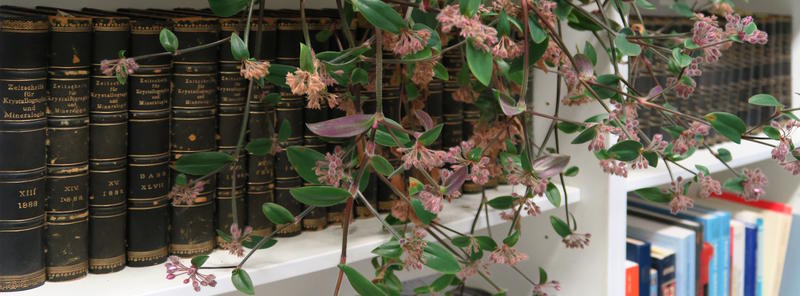FAQs
Samples are initially submitted online, which provides a four digit Service number. This number connects the submission information to the sample to the data to the end results. The sample (labelled with the submission number using a white tag which can be collected from Service Staff) together with a completed the paper based sample submission form should then be delivered to Chemical Crystallography (room 00.111, CRL basement).
Initial visual assessment can be carried out in person before submitting samples to the queue if required. Service staff can also provide advice on how best to proceed with challenging/valuable samples. If the sample has particular sensitivities, or needs to be stored under special conditions we recommend discussing the requirements prior to submission.
X-rays are diffracted by electrons, so heavy elements scatter more strongly than light elements. Typical samples range in size from less than 10 µm (0.01 mm) to around 300 µm (0.3 mm) depending on composition.
Trained Users can collect their own data; see the information about training offered for more details, or contact Service staff.
This is a common question. Many papers with rudimentary crystallographic errors or misunderstandings are published in the literature every year. The numerical nature of the crystallographic data means that experts can and will spot and highlight errors, potentially many years after publication. While many people would like to believe that there are specific parameters that make results publishable, it is not that simple—incorrect structures may appear good and useful results may be obtained from poor data. The key is whether the results are fit for purpose which needs a well-trained and experienced eye. It is recommended that individual structures are discussed on a case-by-case basis with Service staff prior to preparing research for publication.
Determination of absolute configuration requires additional high quality data, but very often, yes. There are a number of myths surrounding absolute configuration determination, for example, the compound has to contain a bromine, but this is not true. These are some considerations:
- The sample should be good quality and well scattering.
- The material must contain at least two elements and one needs to be oxygen or heavier where copper radiation is used (or silicon for molybdenum radiation).
- The heavier the heaviest element is, the better the determination will be.
- The heaviest atom does not need to be close to any chiral centres, it does not even need to be in the same molecule---the absolute configuration of a chiral steroid can be determined where there is a chloride present or even chloroform of crystallisation.
- Since X-rays are scattered by electrons, it is not possible to distinguish between isotopes.
- Disorder in the region of the chiral centre can make determination of the chirality difficult or even impossible.
- Racemates usually crystallise preferentially, so the racemate may crystallise first or better than the conglomerate from a sample that is less than 100% enantiomerically pure.
- Single crystal X-ray diffraction is a bulk analytical technique, where the bulk is the crystal examined. Thus, the biggest challenge is usually demonstrating that the bulk sample is enantiopure and that the crystal is representative of the bulk. For this reason, it is often wise to recover the crystal studied and compare its analyses with those of the bulk (e.g.~optical rotation).
More details are available in the literature or from Service staff.
Data should be deposited in the Cambridge Structural Database (CSD) prior to publication. Because standards change over time, files are often tweaked just before publication, so this should only be done by the person responsible for the data collection and structure refinement, just before publication.
- Chemical Crystallography Service Manager: Dr. Amber L. Thompson
- Analytical Service Crystallographer: Dr. Kirsten E. Christensen
- Crystallography Technician: Mr. Keith Waters
The best way to contact Service staff is through the shared email, crystallography@chem.ox.ac.uk. This is because if the person addressed unavailable, someone else may be in a position to step in. However, please note that this is a multi-user email account and should not be used to communicate personal and confidential information.
Instrumentation required to collect data below 100 K is available, however, the consumables are costly. For more information discuss the details with Service staff.
For details of costs etc., please contact crystallography@chem.ox.ac.uk.






